Follow the Emerald’s LIVE election coverage on Nov. 5.

Theatre seeks to redefine Frankenstein in new play



Follow the Emerald’s LIVE election coverage on Nov. 5.

Theatre seeks to redefine Frankenstein in new play



By Angelina Handris Campus News Reporter
On Oct. 1, the gross income limit to qualify for the Supplemental Nutrition Assistance Program benefits increased, as did the maximum amount of money received. This was due to an annual cost of living adjustment, which was implemented to keep up with inflation.
SNAP is a federal government program that allows for low-income persons to receive assistance in paying for food. SNAP benefits, also referred to as food stamps, Oregon Trail Card or Electronic Benefits Transfer, are a supplemental financial support program for indi-
viduals who are food insecure. The University of Oregon Basic Needs Program can help students apply for these benefits.
For a single person, the income limit for those eligible to receive SNAP benefits has risen to $2,510 per month, and the maximum benefit amount for a single person has increased from $291 to $292 per month.
To qualify for SNAP benefits as a student, individuals must be between the ages of 18 and 49 and take six or more credits for undergraduate students and five or more for graduate students. In addition they must meet at least one of a
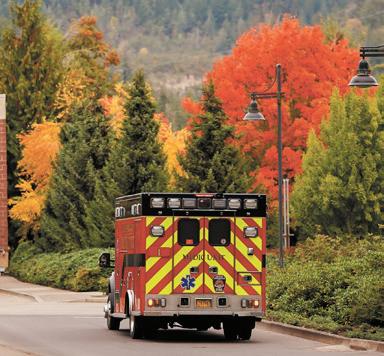
Jess
The University of Oregon’s game ticket system is leaving some students without seats and is falling short of meeting wristband distribution for highdemand games, despite students paying for access
By Ana Narayan Investigative Reporter
At recent football games at Eugene’s Autzen Stadium, the University of Oregon Ducks have competed against new Big Ten conference opponents: the Michigan State Spartans, Ohio State Buckeyes and Illinois Fighting Illini. Oregon entered the Big Ten conference on Aug. 2, and through this, students began facing competitive battles to claim tickets to attend high-demand games. During the Ohio State game, Autzen broke attendance records, bringing in 60,129 fans, well above the 54,000-seat capacity inside the stadium.
In interviews with the Daily Emerald, students said they were confronted with various problems when trying to attend football games this season. Some were unable to find seats, receive student section wristbands required for entry and some even found themselves struggling to get tickets altogether. They said they were left frustrated, raising concerns about accessibility to student-section seats and tickets.
All the while, UO Athletics oversold student-section football tickets by 2,000 tickets and left students without wristbands required for student section entry.
October marked two months of Mobile Crisis Services’s Lane County six month pilot.
Professionals from Lane County Health and Human Services and the Behavioral Health Division have served the community for two months through the Mobile Crisis Services of Lane County . The program assists those experiencing a mental health crisis and was started as a way to address the mental health needs of people in

Eugene and more rural areas of Lane County. MCS works primarily as a way to de-escalate crises and mitigate police involvement.
Olivia McClelland, behavioral health clinical services manager at BHD, said MCS-LC has received a “significant” increase of calls from areas in Oakridge, Cottage Grove and Junction City.
MCS-LC averages around eight to 10 calls per night, and are seeing a “steady” increase in weekly calls






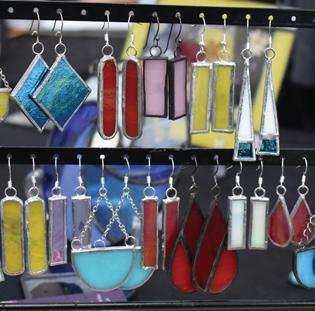










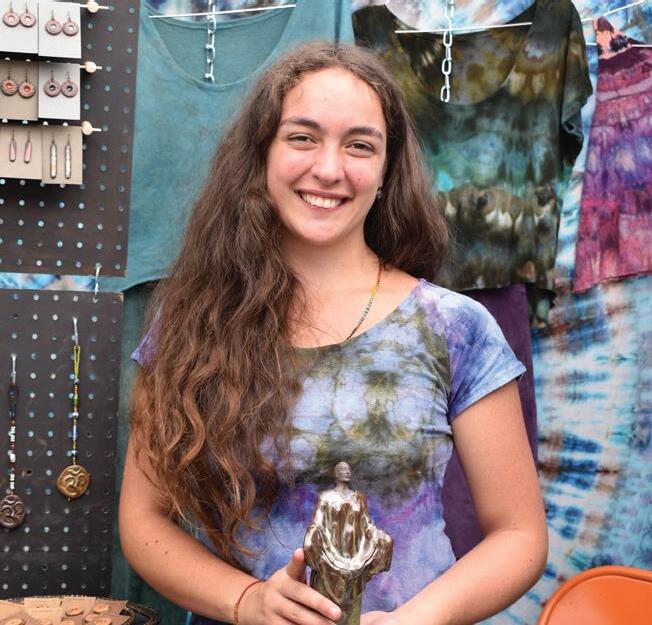

EDITOR IN CHIEF
Tristin Hoffman
PRINT MANAGING EDITOR
Mathias Lehman-Winters
DIGITAL MANAGING EDITOR
Alicia Santiago
CAMPUS NEWS EDITOR
Jasmine Saboorian
CITY NEWS EDITOR
Mathias Lehman-Winters
INVESTIGATIONS EDITOR
Tarek Anthony
A&C EDITOR
Jess McComb
SPORTS EDITOR
Brady Ruth
OPINION EDITOR
Beatrice Byrd
PHOTO EDITOR
Molly McPherson
COPY CHIEF
Alex Woodward
COPY EDITOR
Molly Townes
VIDEO EDITOR
Kendall Baldwin
PODCAST EDITOR
Evan Giordano
SOCIALS EDITOR
Sydney Wolfe
VISUALS EDITOR
Noa Schwartz
DESIGN EDITOR
Sam Butler
DESIGNERS
Eva Andrews
Adaleah Carman
Gabriela Martinez Contreras
Olivia Hoskinson
PUBLISHER AND PRESIDENT
Eric Henry (X317) ehenry@dailyemerald.com
VP OPERATIONS
Kathy Carbone (X302) kcarbone@dailyemerald.com
DIRECTOR OF SALES & DIGITAL MARKETING
Shelly Rondestvedt (X303) srondestvedt@dailyemerald. com
CREATIVE & TECHNICAL DIRECTOR
Anna Smith (X327) creative@dailyemerald.com
STUDENT SALES MANAGER
Lola Tagwerker
ACCOUNT EXECUTIVES
Cooper Gast Elliot Byrne
Ysai Hong Nate Ghilarducci
THE DAILY EMERALD
The Daily Emerald is published by Emerald Media Group, Inc., the independent nonprofit media company at the University of Oregon. Formerly the Oregon Daily Emerald, the news organization was founded in 1900.
The murders of women worldwide are usually committed by men, and the media should not shy away from that fact. We should address this pattern head-on, and make the necessary changes to prevent it from continuing at its alarming rate.
By Claire Nowicki Opinion Columnist
According to the U.S. Department of Justice’s Bureau of Justice Statistics in 2021, “76% of female murders were perpetrated by someone known to the victim.” My point may already present itself with the following question: who did it? The person responsible for murdering these women is usually men.

With voters primarily focusing on who is on their ballot this November, some may find themselves wondering how this election season’s ballot measures will affect them
By Kellan Quinn City News Reporter
Emerald Media Group 1395 University St.,#302 Eugene, Or 97403 (541)-346-5511


The ballot measures Oregonians are voting on in 2024 will have a significant impact on not only the lives of Oregon voters, but also how they vote in the future. But what do they actually say? And what would happen if they
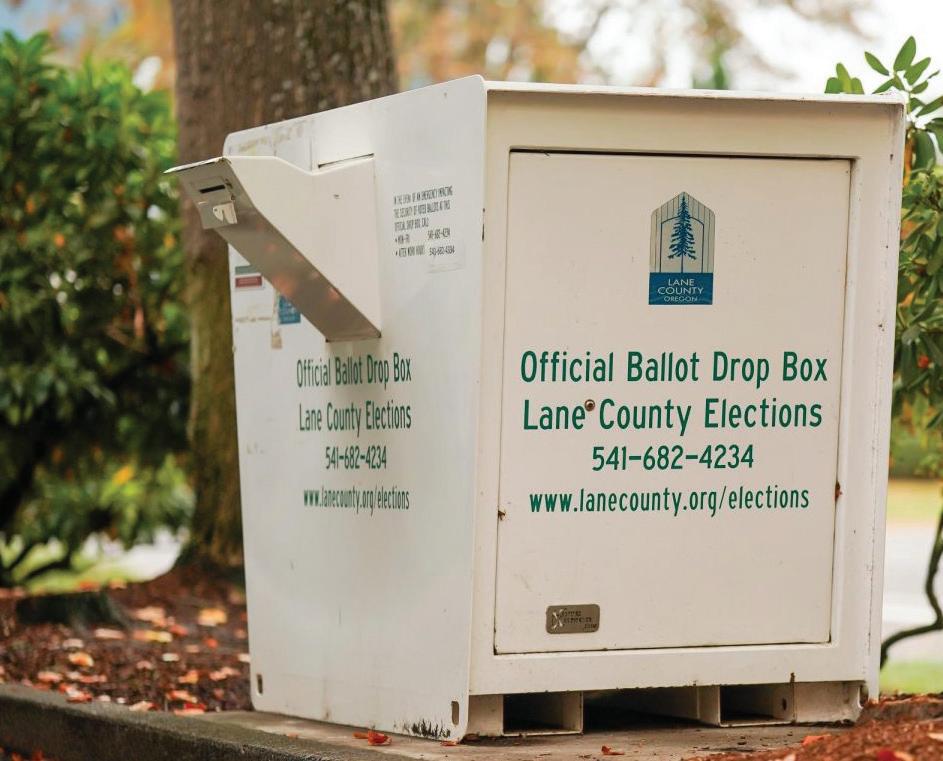
Oregon takes its second away trip of the year to Michigan’s esteemed stadium. What can it expect?
By Owen Murray Sports Reporter
Oregon fans spent the first half of the 2024 season telling Big Ten foes not to judge Autzen Stadium by its size. Now, it’s their turn. Can you underestimate one of the most challenging away trips in a sport?
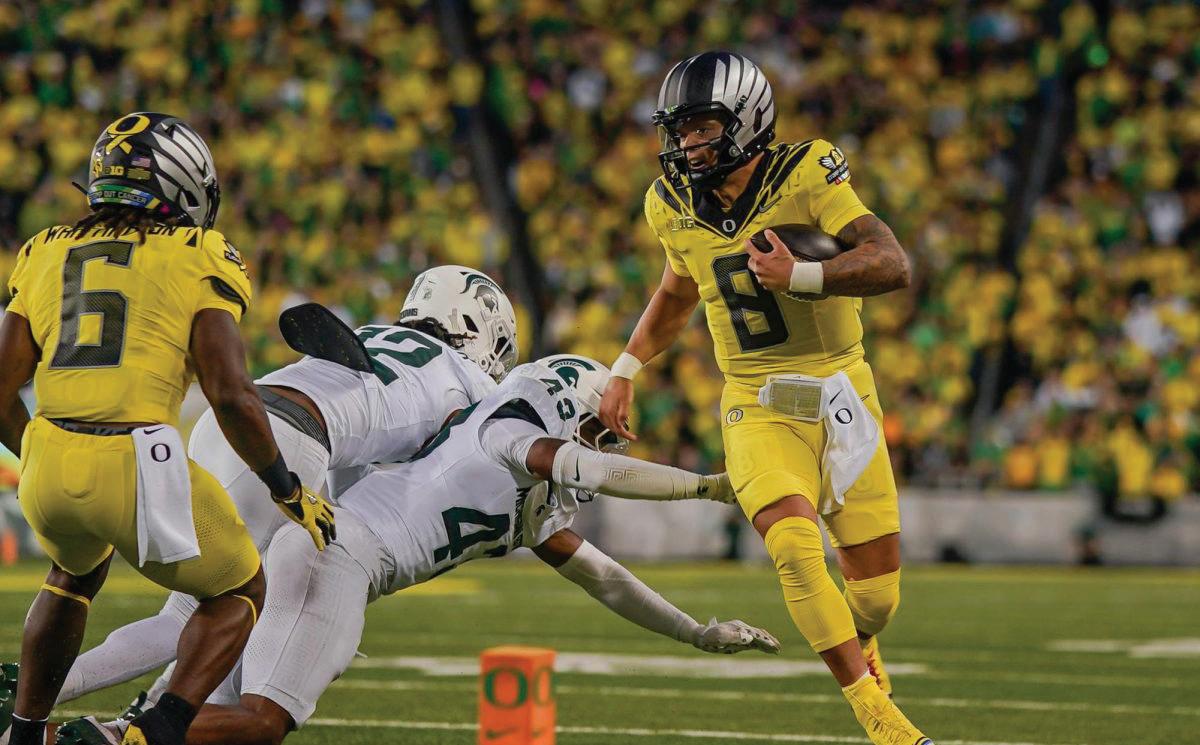
UO students reflect on voting, some for the first time
For some students, the 2024 election will be their first time voting. Both past voters and first-time voting students shared how they feel about participating in the democratic process.
By Corey Hoffman Campus News Reporter
As election day quickly approaches, some students at the University of Oregon reflect on voting in their first presidential election, and for a select few, their first election ever.
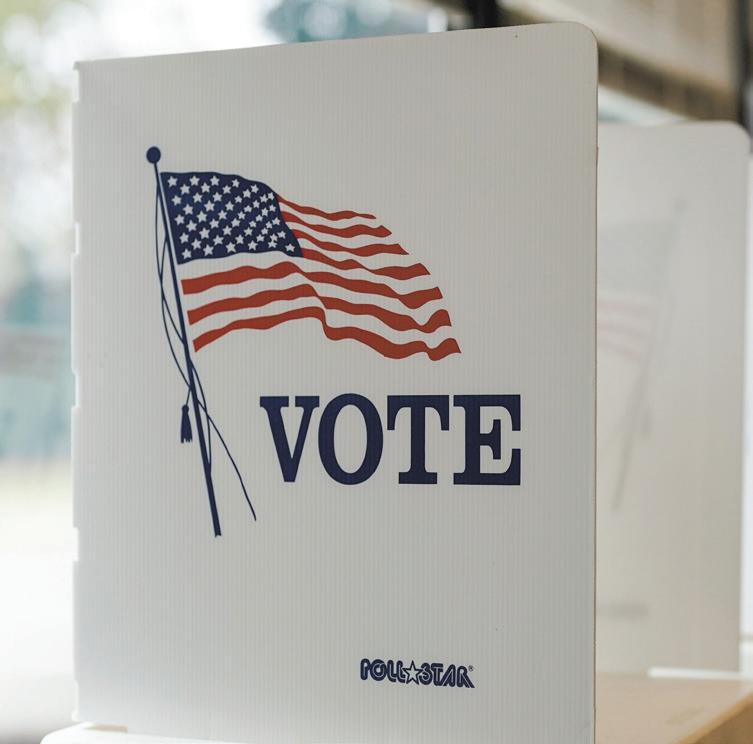
Facing a declining international enrollment rate, UO hopes to bring in students from all over the world
By Corey Hoffman Campus News Reporter
On Aug. 1, 2024, the University of Oregon announced a five-year partnership with Kaplan International Pathways to boost international student enrollment.
Through a partnership with the UK-based agency, UO hopes to enroll roughly 90 international students from all over the world for the 2025-2026 school year, according to the UO Admissions Office.
According to its website, Kaplan International aids UO in recruiting international students for undergraduate degrees by helping students through the admissions process and promoting the university.
Alfredo Varela, the associate director of international admissions, and Erin Hays, the associate vice president for student services and enrollment management and director of admissions, said they both are excited about the partnership.
“Kaplan has invested a lot of time and effort and money with the hope of getting students and they’ve really done so much in terms of marketing. They send teams of people over here and they’ve arranged events overseas,” Varela said.
According to Varela, Kaplan International is primarily a testing and educational agency, which provides students with English language training and support for tests such as the Scholastic Aptitude Test, the Medical College Admissions Test and the Law School Admissions Test.
UO international enrollment was at a peak in 2014, but, according to Hays, it began decreasing after both the 2016 election and the COVID-19 pandemic. Through the new partnership with Kaplan International, UO hopes to enroll roughly 350 international students over the next few academic years.
“We’re hoping to see a steady increase [in enrollment] over the next few years and get back to close to where we were pre-COVID-19 and 2014. We’re really working to see a lot more diversity in our student body,” Varela said.
According to Varela, there are organizations similar to Kaplan all over the world, but the agency’s values closely align with the university’s.
“Kaplan is unique because they have a very limited number of schools that they’re working with, it’s only five in the United States and we’re the only school on the West Coast that they’re representing and working with. That gives us a real advantage,” Hays said.
Discussions about a potential partnership began after Varela reconnected with a former UO representative who now serves as a Kaplan International representative.
According to Varela, Kaplan International does not provide students with any form of financial assistance, but they do provide resources to international students studying abroad.
“They understand the system, they know the deadlines and GPAs. There’s dozens and dozens of different grading systems, so Kaplan really supports this process for the students and helps them understand when they should apply, how they should apply. It’s not just about recruitment, it’s about really supporting students along the way,” Varela said.
Varela stressed the importance of having international students on campus.
“One of the reasons we seek to have more international students is they really enrich the experience for our students here. They bring such a broad set of experiences and backgrounds, not just culturally, but in terms of what their educational background is,” Varela said.

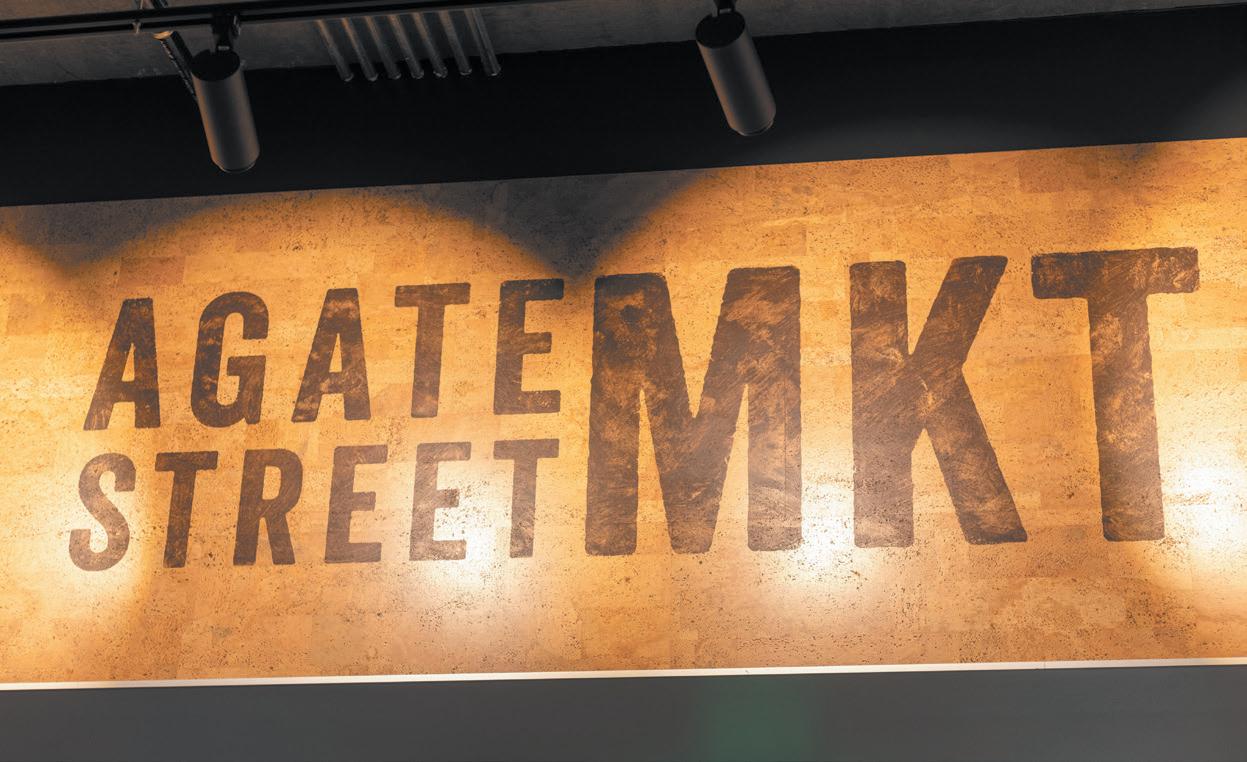
The Supplemental Nutrition Assistance Program, aimed at helping students struggling with food insecurity, saw a raised income limit on Oct. 1
Continued from page 1 number of requirements to qualify.
“I think the maximum income [used to be] around $1500 per month. Some students might make more than that just barely, and then they wouldn’t qualify. Now the maximum income limit is $2,510, so you can imagine that more students will make less [than that] a month. It’s not guaranteed, but they could qualify,” Julia Morrill, director of UO’s Basic Needs Program, said.
SNAP benefits can be used at most grocery stores to purchase food and non-alcoholic beverages. They may be used for fruits, vegetables, breads, cereals, meat, fish and other foods.
SNAP benefits cannot be used to purchase tobacco, alcohol, medicine, supplements or any non-food items. They also cannot be used to purchase food that is hot at the point of sale, according to the UO Basic Needs website.
“It helps students who can’t afford to purchase healthy and nutritious food to supplement their grocery budget,” Morrill said. “It takes the pressure off their regular budget to buy healthy and nutritious food, which can help students think more clearly, sleep better and have better health.”
Students may apply for SNAP benefits on the Oregon Department of Human Services website, or in person at an Oregon Department of Human Services office. After the application process, students will have to meet with an ODHS caseworker, which may take place in person or over the phone.
“It’s a little bit of a complicated paperwork process, so throughout the year, our team, the Basic Needs Program, will have some support for students who are having a little bit of a hard time filling out their forms,” Morrill said. “ We don’t actually submit the forms for students, but we can give them some advice.”

Most stores will confirm if they accept SNAP online or in-store.
On the UO campus, the Agate Street Market in Unthank Hall is the only store that accepts SNAP. The Agate Street Market sells packaged food and cold deli products, such as sandwiches and salads, all of which can be purchased with SNAP benefits.
According to Morrill, students who are on meal plans that cover more than 51% of their meals may not qualify for SNAP benefits.
“If your meal plan consists of 51% or more of your meals, then you won’t qualify for SNAP. So if it’s less than 50% of your meals throughout the week, then you might be able to qualify for SNAP in other ways, but there is that restriction for students who live in a residential campus and they have a meal plan that is a complication,” Morrill said.
To learn more about the SNAP benefits program, visit the UO Basic Needs Program website.
The Lane County Courthouse is located along 8th Avenue in Eugene
Hanna Kalan City News Reporter
Anywhere between 400 and 600 people visit the Lane County Courthouse daily. Located in the heart of downtown Eugene, the building was constructed in 1959 and since then, has undergone minimal renovations.
Lane County is responsible for maintaining the building and utilities. The most recent upgrade was a chair lift installed six months ago to help jurors in wheelchairs get from the jury assembly room in the basement, to the security entrance on the first floor of the courthouse.
Despite this upgrade, the building remains difficult to access for some with disabilities.
“If you had a catalog of [county owned] buildings that listed best to worst maintained, I think this side of the building [the courthouse] would pretty much be at the bottom of the list,” Trial Court Administrator Liz Rambo said.
The courthouse was built on a split level, which is typical of many buildings. However, because of the way the security entrance must be set up, access to the courtrooms begins on the second level. Those who are unable to use the stairs may use an elevator that moves patrons up and down six feet and two inches.
The elevator was installed through state funds from a lottery. “It was specifically earmarked, if I remember correctly, for court security projects,” Rambo said. However, the county was able to use the money for the elevator rather than increasing security measures that were already solidly in place.
Courthouse employees heard concerns from disability advocacy groups that the location of the courthouse was inaccessible.
In response, in May 2019, the Eugene community voted on a bond measure that would allow the county to build a new courthouse. “The proposed new location was the parking lot right next door,” Rambo said.
The central location of the courthouse in downtown Eugene would have remained. Daphne Patrick, a University of Oregon student, said she likes the current location of the courthouse because of its centrality.
“I think being close to downtown is nice, there is a lot of parking in the area,” said Patrick “It is in a highly populated area so I think it is pretty alright.”
The bond failed, garnering only 41% of the vote.
In 2020, civil employees decided to pause the conversation of building a new court house so the community’s energy could be focused on dealing with COVID-19.
Courthouse employees worked every day, in-person, during the COVID-19 pandemic. “[We] did a lot of physical distancing and put jurors in one room and watchers in another,” Rambo said.
A potential courthouse renovation could access some funds from the federal American Recovery Plan Act, which set aside money for essential workers, utilities and infrastructure. Under ARPA, the Coronavirus State and Local Fiscal Funds program authorized $350 billion to be spent by state, territorial, local and Tribal governments with the goal of bettering the community.
Oregon has received a total of $6.4 billion
from ARPA. Of that money, Lane County received approximately $124 million to go toward county investments.
“If my dreams were answered I would love a building that would welcome people,” Rambo said. “For people to feel like it’s their building, where they go to get justice services, right now, it’s not really feeling like it.”
Rambo said that employees of the Lane County Courthouse do what they can to make the facility more accessible. They provide headsets and built a ramp in a courtroom for a judge who used a wheelchair.
“Everything is expensive, we have done everything that can be easily done, all the rest of it feels hard.” Rambo said.

October marked two months of Mobile Crisis Services’s Lane County six month pilot. County officials consider some of the challenges that have surfaced since August.
from metropolitan and rural Lane County, according to McClelland. Additionally, MCS-LC professionals have expressed challenges with hiring.
“Our biggest challenge has been staffing in terms of mental health services across the state. We are no different here,” McClelland said.
According to McClelland, the US has been experiencing a mental health crisis and a low number of mental health professionals have been available in the workforce. Some reasons include challenges with appropriate training, inadequate pay and a poor insurance reimbursement model.
“As with any new service, we are working to ensure sustainable funding to support the longevity of programming, which includes identifying multiple, appropriate funding sources comprised of statewide funding specific to mobile crisis services for communities,” LCHHS Communications Director Jason Davis said.
MCS-LC largely operates out of vehicles that come to those in crisis and currently serve areas as far as Mapleton in West Lane County. Past that point, the Western Lane Fire and Emergency Services undertakes the crisis support duty.
According to Davis, Crisis Assistance Helping Out on the Streets and MCS-LC share the patients served in the Eugene-Springfield area. Around 30% is attended to by MCS while CA-
HOOTS manages 70% in the metropolitan area.
“We have been able to make good connections with a lot of the emergency medical services and law enforcement agencies, especially in areas that haven’t typically been served in our community,” McClelland said.
Davis said mobile crisis services would ideally be funded at similar levels to critical first responders like Fire and Emergency Medical Services.
“In the field of mental health, it’s really hard work,” McClelland said. “This is passion work for a lot of people and they still have to pay their bills. There is supposed to be a parity between physical health and mental health provision and that’s not always recognized in the wages people are paid.”
When prospective new hires are found and onboarded, they must train to integrate into emergency systems around the city, including police and emergency health services.
“Not having 24/7 coverage has been a challenge,” McClelland said. “We know that the need is out there, and we are going to continue expanding as we continue to hire folks.”
The six month pilot informs MCS-LC what the demand in Lane County looks like and how to best match it with the right amount of personnel.
A new PeaceHealth Stabilization Center is expected to open in 2027. Lane County is currently
in a 90-day due diligence period before purchasing the land where it will soon be constructed.
The stabilization center would work in tandem with the MCS-LC and other crisis services to provide a place for those patients to receive appropriate care typically unavailable in an emergency room.
“I think that is an important part of a larger response to mental health crises in our community,” McClelland said. “That is the three-prong model, the crisis line, the mobile crisis and the stabilization center. If they know it exists, they can walk in and it wouldn’t have to rise to a certain level.”

UO students can attend football games, as well as women’s and men’s basketball games by purchasing a Ducks Sports Pass, which costs $150 this year - an increase from the previous $125 cost of previous years. The Duck Sports Pass gives students priority access to claim tickets for the entire season.
The number of passes distributed are limited, and does not guarantee tickets to a game but rather gives students “priority to access” to the student ticket claim process.
To claim student-section football tickets with the Ducks Sports Pass, eligible students must enter the ticket claim the Sunday before the game. They are then put into a waiting room, where they are entered in a ticket claim queue. Wait times can range from a few minutes to multiple hours, depending on the popularity of the game.
“ I was in the waiting room for like five hours. It was really bad.
“
If there are leftover unclaimed tickets, the remaining student tickets will be sold to nonsports pass holders.
According to Senior Associate Athletic Director of Communications Jimmy Stanton, the UO Department of Athletics sold 10,000 Ducks Sports Passes for the 2024-2025 school year.
Stanton revealed that due to student section capacity, only 8,000 football tickets can be distributed each game, leaving potentially up to 2,000 sport pass holders out of tickets.
Stanton verified that all 8,000 available tickets were distributed for the Ohio State and Michigan State games and that 500 students who had claimed tickets did not use them — with a noshow rate of approximately 7.5%.
In an email statement to the Emerald, Stanton said that there are additional standing room only tickets outside of the student section given to sports pass holders should tickets sell out. Stanton said there were an additional 500 standing room tickets for students at the Michigan State game and 200 at Ohio State.
According to Stanton, the extra 2,000 sports passes sold over capacity factors in an estimated 20% “no-show” rate expected among students for each game.
In popular games such as Ohio State, where the no-show rate may be lower, this policy could potentially leave up to 2,000 students who paid for the Duck Sports Pass for the 2024-2025 school year without a fair chance to claim a ticket.
In the email, Stanton pointed to the terms of purchase of the Ducks Sports Pass which states, “Duck Sports Pass gives purchasers the priority access to claim student tickets, but does not guarantee inventory will always be available for every game.”
Students face frustration to find available seats and wristbands
“Sometimes it’s really crazy. The Ohio State game was insane. I was in the waiting room for like five hours. It was really bad. I ended up getting a ticket so it was fine. Usually it’s really easy,” UO Junior Alyssa Petty said.
Petty went on to say her friends lined up half an hour before the stadium opened up for the Ohio State game.
Petty also said the last two times she went to the games, UO event management ran out of the wristbands — a requirement for every student to wear in order to enter the stadium and find a seat at the student-section. If students do not wear wristbands handed by event management, they cannot enter the student section.
“They changed all of our student tickets to standing room tickets. They just run out of wristbands because they oversell it.”
If students do not receive wristbands from event management at student-section gates, they are not allowed to enter the student section, compromising their experience to watch or attend the game.
This leaves some students, like Petty, unable to enter the student section, regardless of whether they were able to successfully claim a student section ticket or not.
Senior Kate McCabe shared similar concerns regarding football games.
“Honestly, previous years have been better. Getting into the student section has been very difficult,” said McCabe. “I know at one point they ran out of student wristbands. Even if you had the right ticket, you weren’t given a wristband. Once you get in, there’s not really a spot to go because it’s full.”
McCabe said she left the Ohio State and Michigan State games after not receiving a wristband for entry to the stadium.
Football wristband distribution fails to meet demand
For the Ohio State and Michigan State games, 7,500 wristbands were distributed even though 8,000 student tickets were available.
When asked on why the university oversold sports passes, Stanton did not respond to an interview request with the Emerald, stating in an email, “The Duck Sports Pass gives UO students priority access to claiming football, women’s basketball, or men’s basketball tickets and is not specific to one sport. For football, students must claim tickets online the Sunday before each event.”
Students look to reselling game tickets
Cole Stevenson, a third year student, said he buys
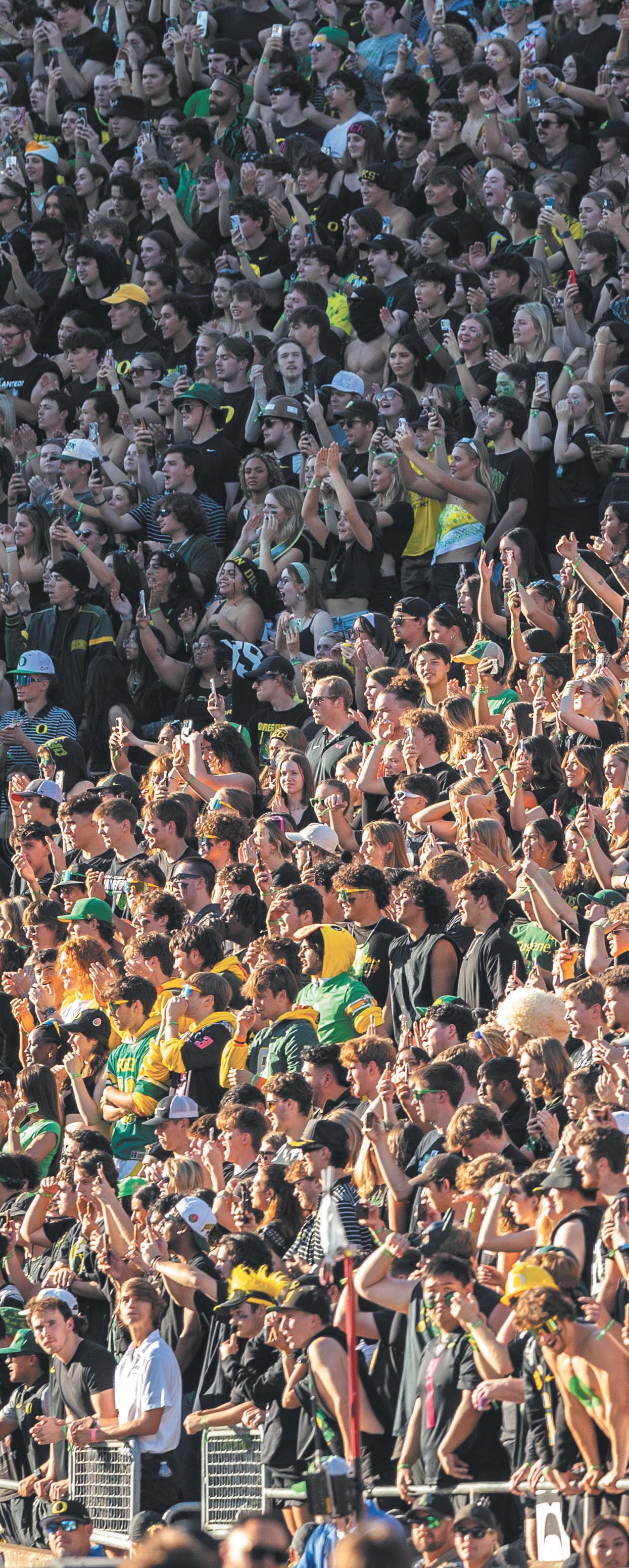

football tickets through the fellow students who resell tickets on social media app Snapchat.
Some students buy Duck Sports Passes for the sole purpose of reselling tickets at high prices instead of going to the game.
“My class, and the classes below me will post. There’s also people that get student passes and immediately sell tickets. That’s a large part of me buying tickets,” Stevenson said. “For the Ohio State game … It [ticket prices] was around $300 to $400. For last week’s game [against Illinois], it was like $100.”
ASUO Senate votes to end student athletic funding
Stanton also stated that tickets used to be “free for students, but the Associated Students of the University of Oregon changed that longstanding program in 2021 and stopped funding this program and benefit for students.”
The ASUO, UO’s student government, Senate President Taliek Lopez-DuBoff confirmed ASUO’s decision to end the funding for students. In 2021, ASUO Senate made a unanimous decision to use the funds from student athletic benefits and relocate them to create a Basic Needs Program for students.
Lopez-DuBoff said, “ASUO leadership saw the incredible importance in creating a basic needs center, and so when trying to come up with ways to fund it, they decided what had to go was the buying tickets for student football games.”
He said that reinstating the longstanding program is unlikely.
“The surplus now is certainly large… but right now, we just don’t have the capacity. That’s not at the forefront of our minds right now. I can’t really speak to that.”
Senior Campus News Reporter Riley Fox and Investigative Reporter McKenzee Manlupig contributed to the reporting of this story.
(Molly McPherson/Emerald)
(LEFT) The student section at Oregon Ducks Football’s game against the Ohio State University Buckeyes on Oct. 12, 2024, at Autzen Stadium in Eugene, Ore.
(ON THE COVER) Duck fans in the student section dance and sing along to “Shout.”

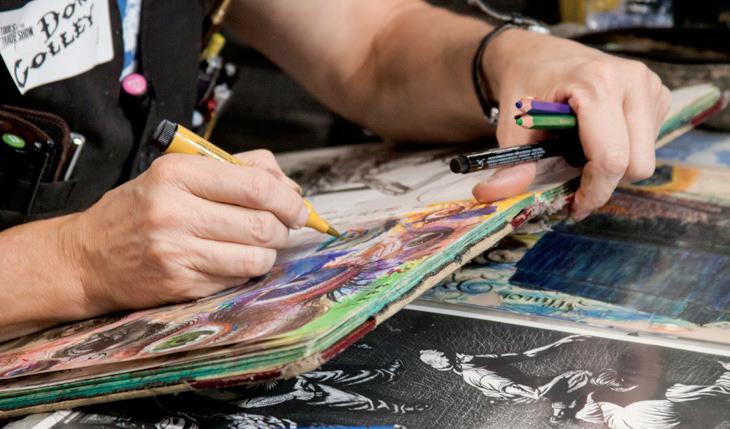

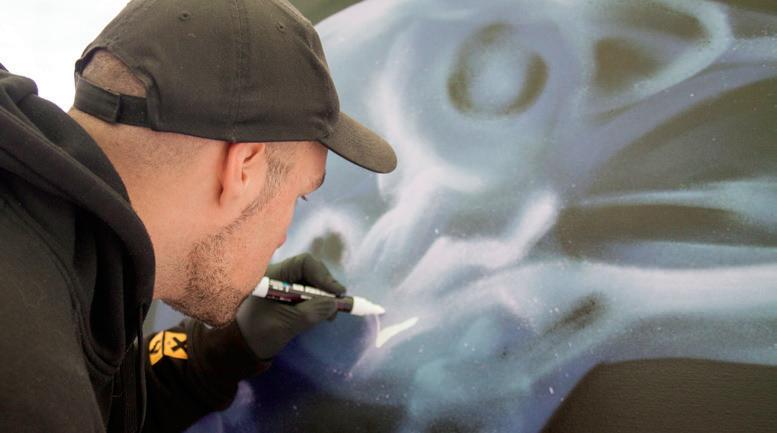


By Bailey Meyers
For 40 years the Duck Store has hosted the Tools of the Trade Show, a two-day event highlighting local artists and art tool vendors. The Tools of the Trade Show is dedicated to fostering creativity by providing artists with essential tools, whether they are just starting their artistic careers or are seasoned professionals. Check out some of these tools and connect with local artists at this year’s showcase on Nov 6 and 7 from 10 a.m. to 4 p.m.
Finding the perfect pen can be a daunting task, let alone keeping track of said pen throughout the entire school year. Writech Deco Gel Pens are the perfect solution to this problem. The pack of three gel pens includes white, gold and silver, adding some sparkle to your notes or sketchbook. Writech also offers an assortment of journaling kits with colorcoordinated pens and highlighters.

Leuchtterm Journals are anything but your basic notebook. Choose from an array of aesthetic color choices ranging from “Lilac” to “Rising Sun.” Leuchtterm also offers a variety of journal types including dotted pages, ruled lines, double-lined and blank pages. For class notes or daily journal entries, Leuchtterm Journals are a fun option to liven up your writing routine.
These non-toxic paint markers can be used on almost any surface, creating a colorful and vibrant design. POSCA Paint Markers are guaranteed to liven any window, ceramics or other artistic project with bold colors that can easily be layered. Check out the pack of eight markers with nearly every color in the rainbow.
What better way to store your writing utensils than in an adorable animal-shaped case? Punilabo offers too-cute cases that resemble some of your favorite furry friends. Choose from a gray cat, a Calico cat, a Boston Terrier and a Shiba Inu. These cases are guaranteed to put a smile on your face each time you reach for a pencil.
For more discounted art supplies and the opportunity to meet with local artists, check out the Tools of the Trade Show at the Duck Store Nov 6 and 7.




8 Canvas bag
9 Kitchen colander
10 Summer camp staffer
“Out of the office”
Attention-grabbing advertisement
Chaotic struggle 58 New Haven Ivy 59 Quality-overquantity axiom
11 __ like milk: looked bad in hindsight
12 Flushed
14 “__ World”: “Sesame Street” segment
18 Repeated word in a Doris Day hit
22 Doorbell sound
That fella’s
Costco rival, familiarly
Experimental music genre, and what can be found in this puzzle’s circled letters?
62 Billie Eilish’s “Happier Than __” 63 Weak-__: cowardly 64 Mark on a dalmatian’s coat 65 Detective Monaghan in Laura Lippman novels
T-bone, for one
Pt. of GPS
Covering a wide scope
Alfredo sauce ingredient
“__ you serious?” 5 Dawn droplets
6 Neighbor of Lucy and Ricky 7 Performs salah, e.g.
24 Roasted, hosted, or toasted
25 Spanish “those”
28 Greet from afar
29 __ and beans
30 Chatters on and on
31 “Adopt, don’t shop” org.
32 Like some thermometers
33 Hypothetical space-time shortcuts
35 Org. that oversees a cryptologic museum
38 Dad jokes, often
39 Melon discards
40 Skeptical scoff
46 Upper limbs
47 Is rife (with)
49 Professional dealmaker
50 “Ugh, I’ll never be able to __ that!”
51 Sits (down)
52 “Sleigh Ride” composer Anderson
53 Throws away, slangily
54 Russian refusal
55 Roof overhang
56 Varieties
60 Poseidon’s realm
61 “No clue,” for short
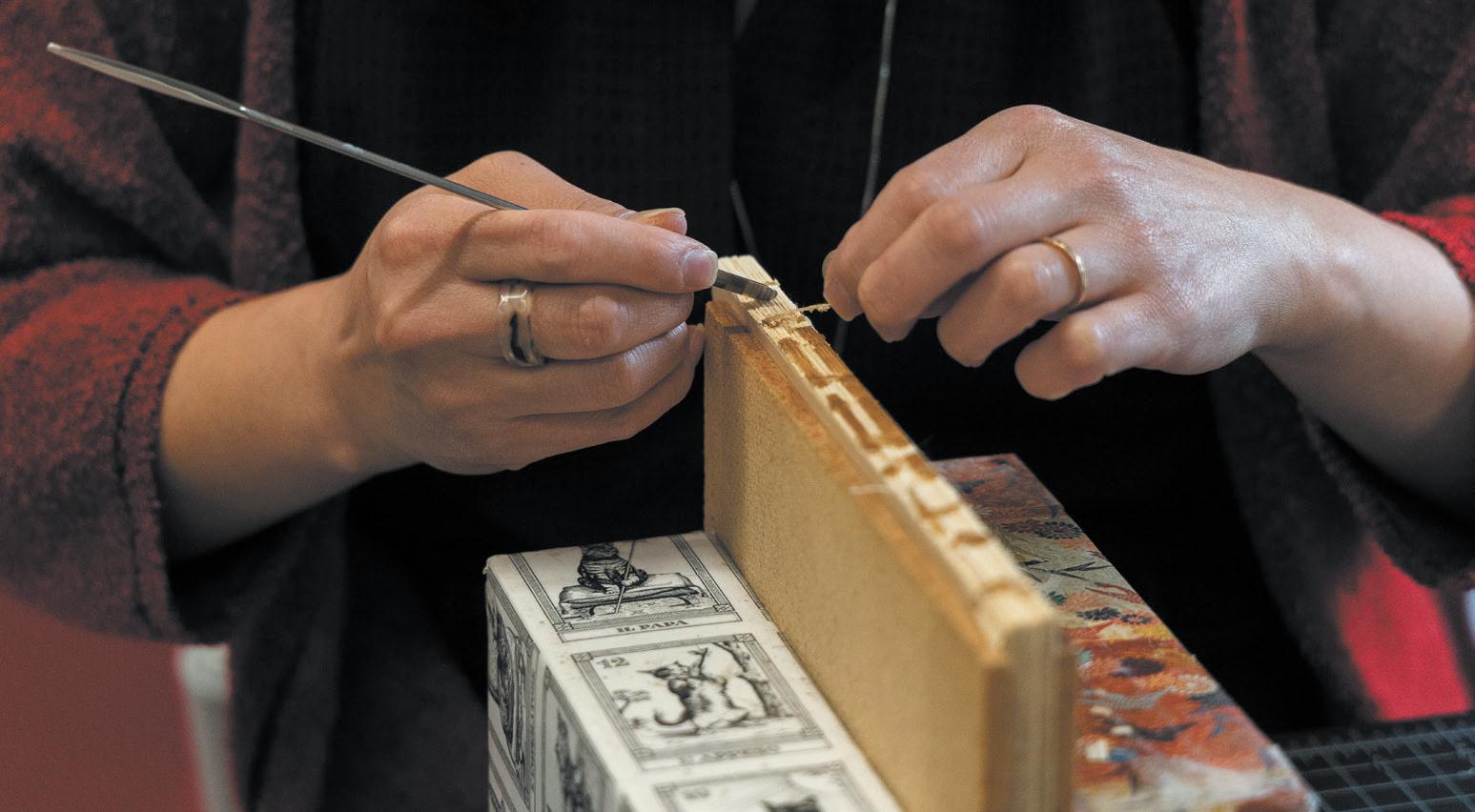
Bookbinding is a craft with a long history, and local bookbinders like Susan Stogsdill and Jason Patrician are working to keep the practice alive
By Bella Graham Arts & Culture Writer
If you’ve ever seen videos on TikTok where someone rips the cover off of a book, only to turn it into a beautiful rebound and recovered book, congratulations — that’s bookbinding! Although bookbinding has become better known from TikTok, the craft is much older than the app.
Bookbinding is the process of assembling loose pages within a cover to form a book. According to Britannica, this began when the codex (earliest form of a book) began to replace the scroll.
“Eventually, people folded paper so it resembled an accordion. Then it evolved to binding the pages on one edge so that you could flip back and forth through the book,” Victoria Wong, a University of Oregon librarian specializing in book conservation, said.
The rise to supremacy of the bound book was related to cultural changes — namely the rise of Christianity and consequent demand for larger books (like the Bible). Books developed around the world, with the earliest printed book found in China.
Local bookbinders Susan Stogsdill and Jason Patrician are keeping this ancient tradition alive by founding bookbinding stores; Stogsdill founded Cyrano’s Bookbinding in Corvallis, and Patrician owns the bookbinding store The Fish Bindery in Portland.
Stores who practice this craft, known as binderies, start by taking the book apart, taking the cover off and then separating each section of pages. From there, they make necessary repairs and then put the book back together.
“It’s easier to work on the older books, believe it or not, than the new. It’s mass production — the quality isn’t there anymore, unfortunately,” Patrician said.
For Stogsdill, this is most evident in working with children’s books. “The lithograph prints in them are just beautiful. Computers cannot touch what they used to do by hand,” Stogsdill said.
Bookbinders frequently work on historical books. Stogsdill said the most notable book she has worked on was Daniel Boone’s family bible. Boone was an American pioneer born in 1734 and was one of the first folk heroes of the United States.
Depending on the customer’s preferences, bookbinding allows for creativity on the part of the bookbinder. Patrician regularly gets requests to redesign the covers of books.
“Rebinding for aesthetic purposes is one of my preferred things to do. Right now, I’m working on a family genealogy book. They want their family crest put onto the cover, so I’ll be doing that with all leather onlays,” Patrician said.
Despite the passion that bookbinders have for their craft and the resurgence on social media, bookbinding has been on the decline. Bookbinders want to change that.
“Eventually, I’d like to mentor somebody and teach them everything I’ve learned so the craft is carried on. There aren’t a lot of us doing this anymore,” Patrician said.
Wong held similar sentiments. “If anyone’s interested in bookbinding or learning about inks or colorants, I would love to work more with professors and students on research projects.”
As artisans like Stogsdill and Patrician continue to preserve this craft, it is crucial to support the artistry of bookbinding to ensure these tangible connections to our literary past endure for generations.
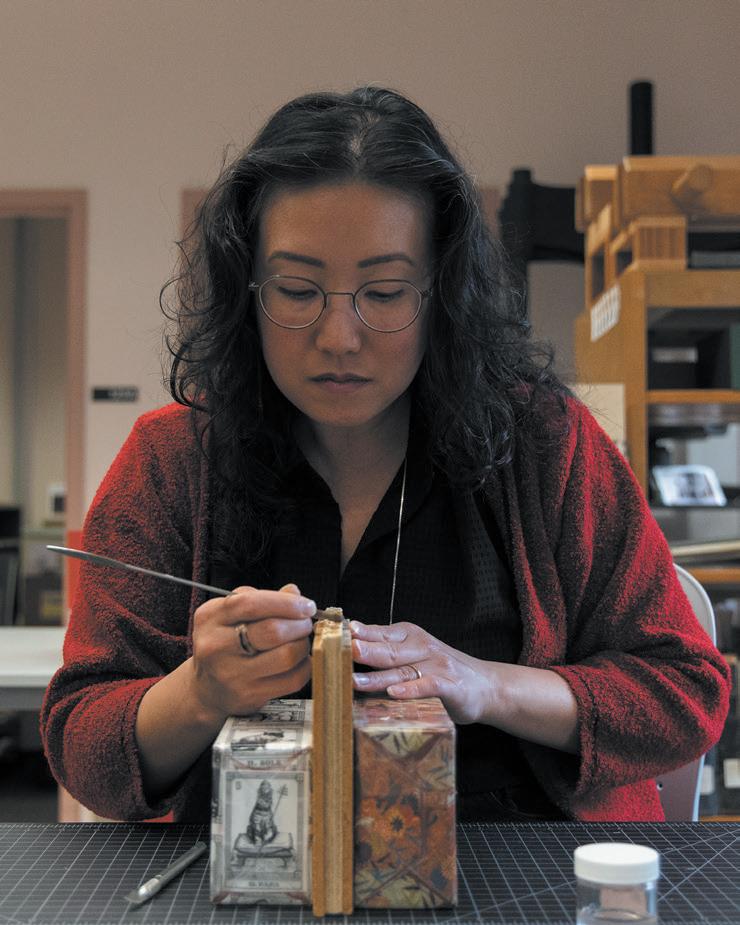
The director and actors from the UO Theatre Department’s “Frankenstein” unpack who Frankenstein really is
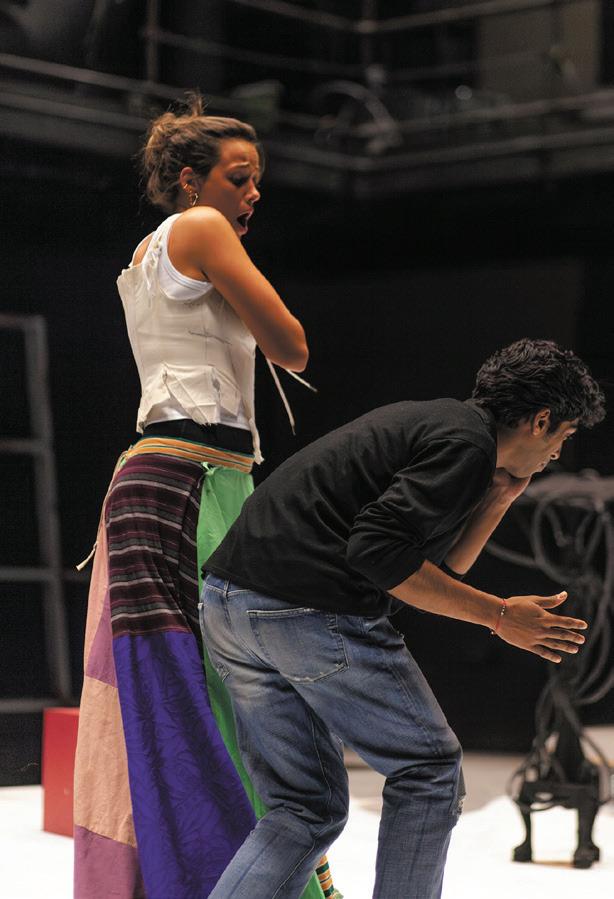
By Seira Kitagawa Arts & Culture Writer
Frankenstein is often characterized as a “monster,” but Henry Morton, the actor playing Frankenstein in the University of Oregon Theatre Department’s production, is seeking to redefine Frankenstein.
He is actually just a guy,” Morton said.
Morton will play the latter and the end part of Frankenstein’s life when the play premieres on Nov. 8. The UO Theatre Department will be showcasing “Frankenstein” for three consecutive weekends from Nov 8 to Nov. 24 at specific times.
To create the character of Frankenstein, several actors will be playing him at different stages in his life.
Landon Kobz is an actor for “the creature,” or the older monster version of Frankenstein. It is both Morton’s and Kobz’s first time performing in a UO Theatre production, both auditioning for the play in June 2023.
Morton said the story is more than a horror creation. “It’s a lot deeper and more emotional than what people would think of as a horror story,” Morton said.
“Frankenstein felt ill for so many months because he was laboring so hard in creating this [monster] and he almost died,” Morton said. He said the play aims to illustrate Frankenstein as a human, rather than as a monster.
Michael Malek Najjar, the production director, has been working with the UO Theatre almost every year since 2011. “Working with different talents is great,” Najjar said.
Najjar said that while selecting the
script, he was looking for a “producible” one with a deeper message. He described the chosen script as “more philosophical and thoughtful” in contrast to other adaptations he read through that focus on the horror side.
Najjar said the play touches on topics such as “life and death, fathers and sons” and “what we do when we hurt others and what happens to us when we hurt them.”
Speaking on the character of Frankenstein, Najjar said, “the creature was not horrible but life made him horrible. Even the most innocent people would become ugly and violent.”
To get involved with future productions, students of any major can sign up for the mailing list from University Theatre and receive information about play auditions.
As soon as the school year started, actors kicked off three-hour weekday and four-hour weekend rehearsals for five days a week.
“Many rehearsals are needed to deliver good quality,” Najjar said. He also worked with costumes and design students over the summer.
The production will take place at the Hope Theatre, a smaller black box theatre where seats surround the stage in the middle.
“I like working at the Hope Theatre because it feels more personal to the audience and intimate and much more exciting,” Najjar said. “Audiences sit on the same level as actors, and get to watch the play close up.”
Morton and Kobz said they both enjoyed watching productions last year at the Hope Theatre as audience members. “You can see the show three times and see different shows depending on which side you sit on,” Morton said. Frankenstein will be on stage from Nov. 8 and will be playing for three weekends: Nov. 8-9, 15-17 and 21-24 at the Hope Theatre at 7:30 p.m., with two matinee performances on Nov. 17 and 24 at 2 p.m.
UO students can receive a free ticket at the door one hour before the show, and it is $8-10 for other guests. The tickets will be available at the UO Ticket Office.
Cull/Emerald)
